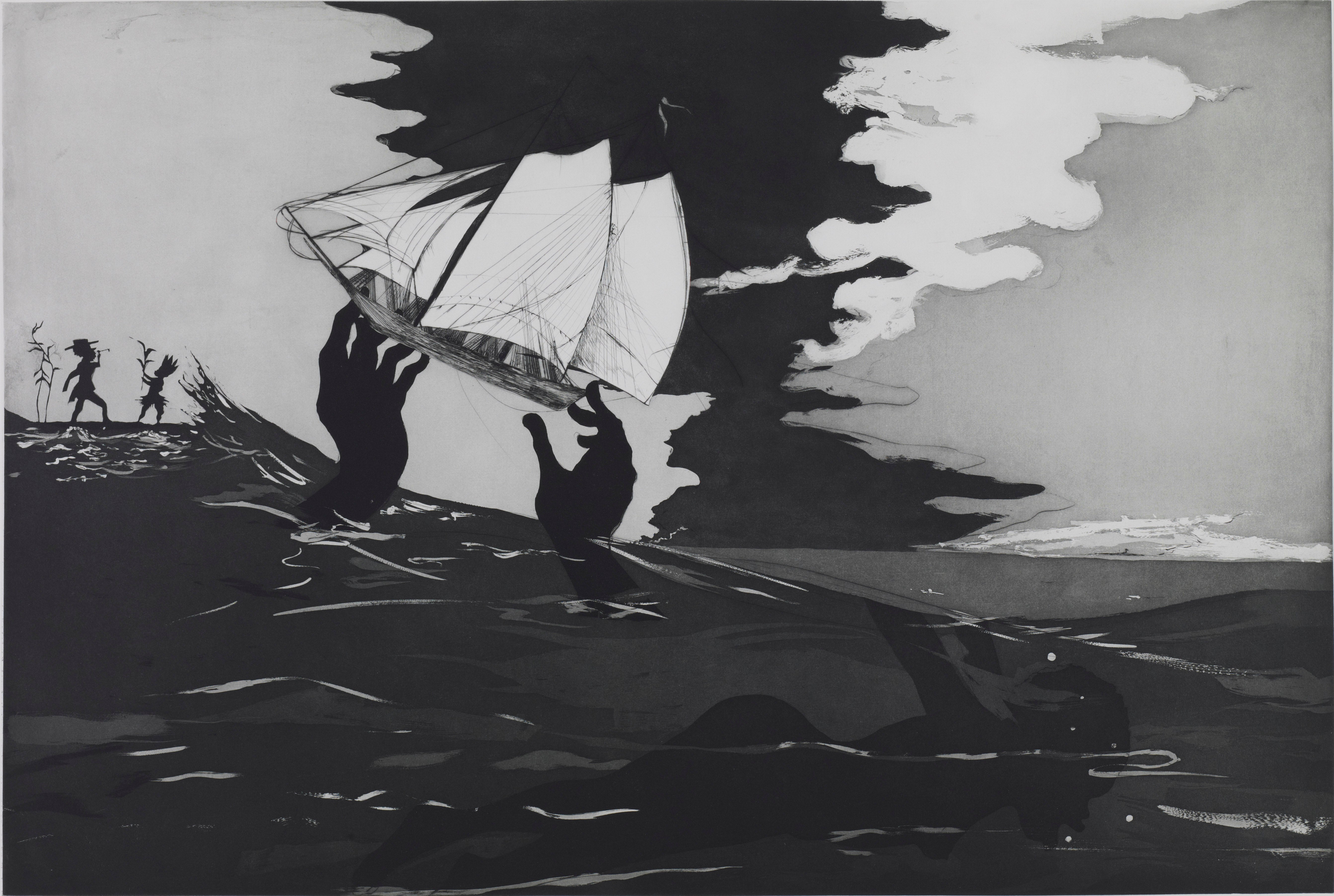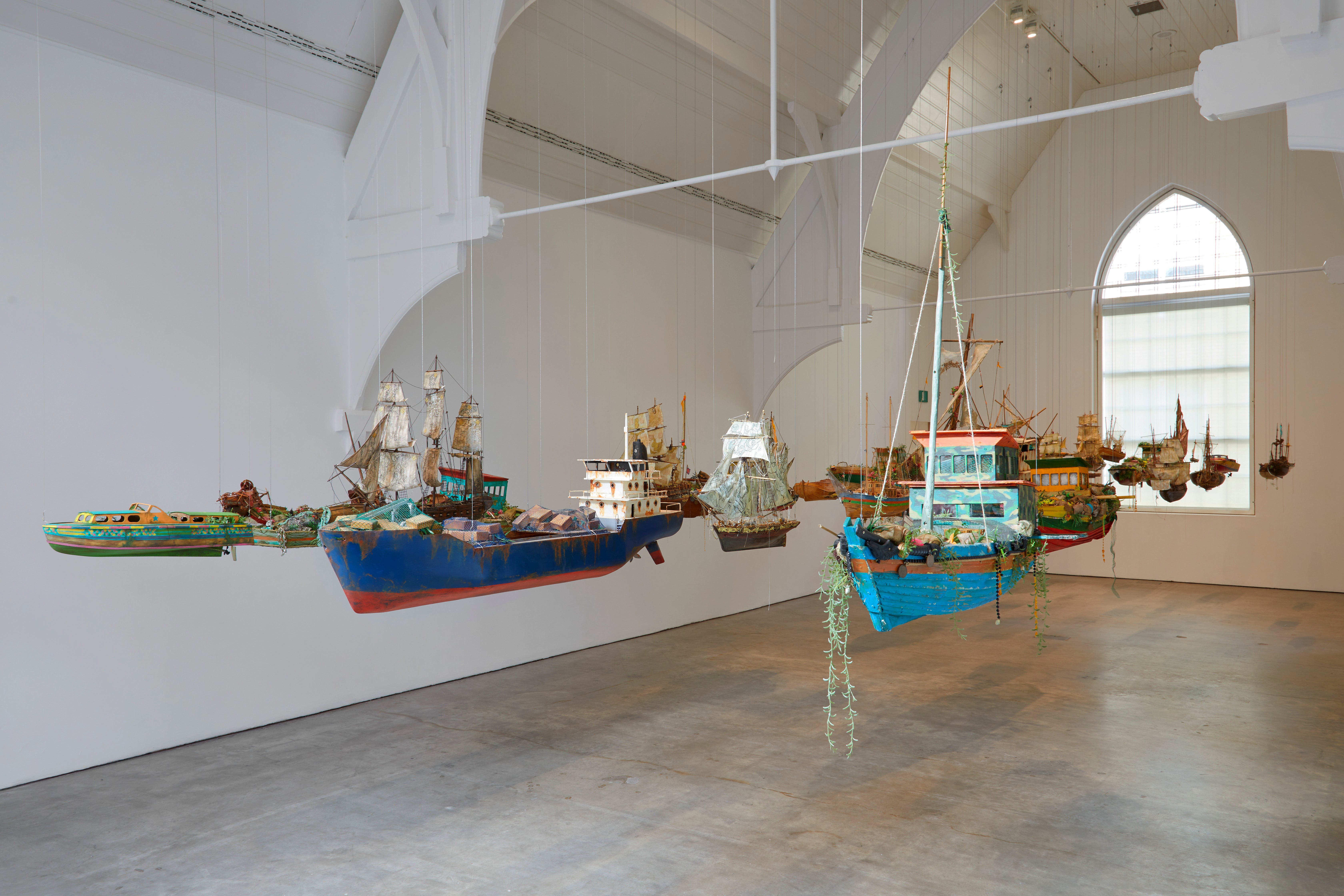The Royal Academy reckons with its history in Entangled Pasts, 1768–now: Art, Colonialism and Change
In this beautifully assembled but well-mannered show, great (white) British artists such as Joshua Reynolds and JMW Turner are displayed alongside contemporary stars from Sonia Boyce to Yinka Shonibare as the RA interrogates its institutional links to colonialism

Since the furious Black Lives Matter protests of 2020, prompted by the death of George Floyd, just about every cultural institution in Britain has made some sort of expiatory gesture, whether it’s offering to return artefacts or mounting a hastily organised display. Three-and-a-half years on, the Royal Academy offers its own ambitious response, putting great (white) British artists of the past such as Joshua Reynolds and JMW Turner “in conversation” with great contemporary (Black) artists of the order of Sonia Boyce, Frank Bowling and Yinka Shonibare. The core issues around facing up to Britain’s colonial past haven’t gone away. Yet, while this beautifully assembled but well-mannered exhibition invokes fist-waving buzzwords such as “resistance” and “change” in its blurb, it’s unlikely to have visitors rushing to the barricades.
Since 2021, the Royal Academy has been carrying out research into its institutional links to colonialism and the transatlantic slave trade, and the ways this has impacted the images produced by its members – who include most of the great British artists of the past 200 years. This exhibition presents some of the findings alongside a kind of commentary, of mostly existing works by leading contemporary artists of the Caribbean, African and American diasporas including Kara Walker, John Akomfrah, El Anatsui, Barbara Walker, Lubaina Himid and Hew Locke – almost all of them Royal Academicians or honorary members. It’s an opportunity for the RA to demonstrate not only that it’s doing the right thing by history, but how many of the great and the good of the Black art scene are closely involved in the organisation as it exists today. Yet the show is very much more than a great PR exercise.

The quality of the works, from the four wonderful portraits of 18th-century Black Britons that open the show, through major film installations by Akomfrah and Julien, to a spellbinding encounter between Turner and American painter Ellen Gallagher, is near uniformly high. This is no mean achievement in a gallery of such size. If you need a group portrait of a super wealthy and revoltingly complacent plantation-owning family with their black servant, flaunting the attributes of “civilised” life a few hundred yards from the misery of their slaves, Johan Zoffany’s technically flawless The Family of Sir William Young (1769) is about as good as it gets. And there are some very revealing curiosities such as Edward Penny’s Lord Clive Receiving from the Nawab of Bengal (1772), which combines elements of classical Indian miniature painting with British academic high style, or a bronze figure of The Hindu Deity Camadeva with his Mistress on a Crocodile, which looks like some bizarre postmodern confection, but was created by Thomas Banks RA in 1794.
The hang is spacious and elegant, with not too much packed into the enormous rooms (which can be a problem at the RA). Old and new works are so tellingly juxtaposed, you could have a pretty good experience of the show – provided your imagination’s engaged – without worrying too much about the wall texts. Which is just as well, as they are unremittingly po-faced. Of course, we need to be reminded of the iniquity of enslavement, but doing it in what feels like every other sentence gives the feel of some anxious GCSE essay.
I doubt many people will come away vastly angrier about slavery or inclined to radically overhaul their view of British history
Given that the RA is, and always has been, an establishment bastion, it would be extremely surprising if its history didn’t include limitless connections to colonialism and slavery and if many of its members hadn’t been outright racists. The latter point is touched on, but not overlaboured. Though even Turner, whose Slave Ship (originally titled Slavers Throwing overboard the Dead and Dying—Typhon [sic] Coming On) (1840) is now regarded as the great anti-slavery painting (sadly not included in the show), apparently invested in a Jamaican sugar plantation.
If significant historical revelations are few, I doubt many visitors forking out up to £22 for this exhibition will be coming for that. They’re more likely to be enticed by the prospect of those “conversations” between modern and historical works. And where curators’ attempts generally to put works “in dialogue” are often clunky or plain inert, the best of the juxtapositions here really work – and they do so by being poetic and suggestive, rather than sloganistic.
It’s hard at first to say why Yinka Shonibare’s sculpture Moving Up (2023), showing a life-size female figure dressed in the artist’s signature wax-print clothes, with a globe for a head, heaving two heavy bags up a staircase, should resonate so potently with paintings that project the life of a slave-owning planter as an endless Caribbean holiday idyll. Perhaps it’s the possibility that she’s moving into their abandoned mansion.
Isaac Julien’s deconstructed period film drama Lessons of the Hour (2019) about the American abolitionist Frederick Douglass feels all the more powerful for having a cluster of John Bell’s idealised – and not so subtly eroticised – Victorian statues of female slaves silhouetted in the foreground.
The Coloureds’ Codex, An Overseers’ Guide to Comparative Complexion is a tray of 15 pots of pigment ranging from white through various browns to black, each labelled as a specific “Negro” type. While it purports to be a historical artefact used by plantation officials to classify slaves, it was made in 2007 by the veteran Black art activist Keith Piper. It strikes a sarky, satirical note that makes a welcome contrast with the benign tone of the show as a whole.

Most spectacular is the enormous Large Weston Room, where John Akomfrah’s three-screen Vertigo Sea, surely one of the great cinematic evocations of the ocean, gurgles and crashes at one end of the space, while a truly haunting cluster of migrant figures by Ghanaian artist El Anatsui, formed from worm-eaten driftwood, hold the centre. Close by are large semi-abstract canvases by Ellen Gallagher describing an undersea world peopled by the descendants of drowned slaves – plus two gloriously vaporous late Turner seascapes.
A wall panel waxes lyrical on the aquatic sublime: “extreme emotions of awe and terror” embodied in nature, and drawn on by artists from the 18th century till now. But looking around at these powerful works you’ll get all that without needing to read a word.
I came away from this interesting and enjoyable exhibition not quite sure what I should be feeling, or what the intended reaction was supposed to be. I doubt many people will come away vastly angrier about slavery or inclined to radically overhaul their view of British history. But as we found out in 2020, it’s social and political circumstances that force such issues – not well-meaning exhibitions.
Royal Academy, 3 Feb to 28 April
Join our commenting forum
Join thought-provoking conversations, follow other Independent readers and see their replies
Comments
Bookmark popover
Removed from bookmarks